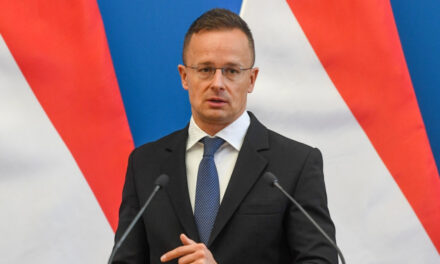Péter Magyar is gaining strength at the expense of left-wing dwarf parties.
According to Real-PR's 93rd recent public opinion poll published on Monday, Fidesz-KDNP (44 percent) is sure to retain first place in the competition between the parties, and the Tisza Party's growth at the expense of left-wing dwarf parties may have reached its maximum; a four-party parliament would be formed an answer this Sunday Nothing threatens Fidesz's primacy in the party competition.
Real-PR's 93rd research - which was conducted between November 25 and 27 by interviewing a thousand adults by phone - examined which party voters would vote for in a parliamentary election to be held this Sunday.
Real-PR 93 announced the results on the base of guaranteed voters, which explained in its announcement: the guaranteed voters are those voters who have pledged their participation in a parliamentary vote this Sunday, as well as indicated which party they would vote for or were classified as a particular party based on their answers to other questions to his voting camp.
According to the research, among sure voters, 44 percent support the government parties, exactly as much as in October, and there is no sign of uncertainty among the Fidesz-KDNP voting base.
Among the sure participants, the Tisza Party could achieve a result of 36 percent, which is within the margin of error compared to the data collected a month ago, so the difference between the Tisza Party and the government parties is 8 percentage points in favor of the Fidesz-KDNP - the analysts point out, adding: this the difference is significant, exceeding the error limits.
According to the researchers of Real-PR 93, the Tisza Party has integrated a large part of the voting base of the left-wing dwarf and small parties, a process that has apparently reached its limits, so the party does not have any further significant reserves available from these electoral strata.
At the same time, behind the Tisza Party's loss of momentum, the impact of audio recordings made public in the recent period is also likely, says the analysis.
According to the survey, Mi Hazánk has a 7 percent support, while the Democratic Coalition has a 5 percent support among the sure voters.
With the 3 percent support of the Hungarian Kétfarkú Kutya Párt, it would probably achieve a result below the 5 percent parliamentary threshold, they wrote.
In the entire population, there was no change in the support of the parties that exceeded the margin of error, compared to the survey a month ago, the announcement states.
MTI
Cover image: Fidesz leads the party race
Source: Facebook/Máté Kocsis













